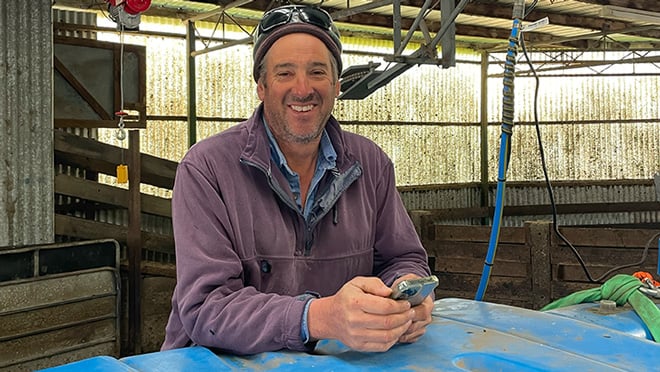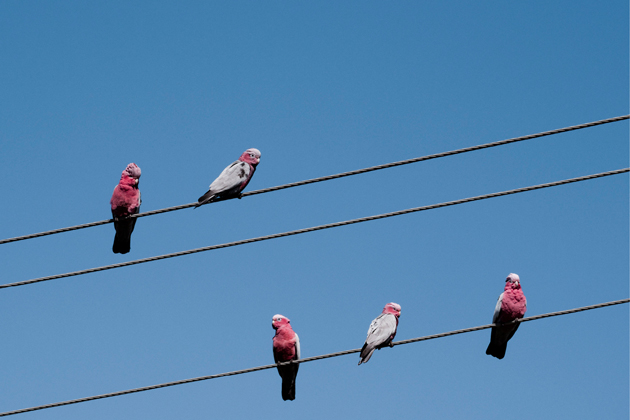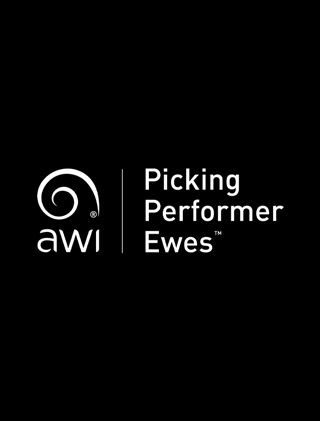AI chatbots offer simple streamlining tool

Artificial intelligence (AI) chatbots, such as ChatGPT, are proving to be surprisingly useful tools for farmers. While much of the talk about AI focuses on big industry or futuristic research, chatbots are simple, low-cost and accessible tools suitable for anyone with a phone or computer and an internet connection.
Author: Catriona Nicholls, AWI Extension TAS Project Manager
Key points
- AI chatbots like ChatGPT offer simple, cost-effective solutions that help woolgrowers manage paperwork, streamline communication and enhance decision-making.
- By using chatbots, woolgrowers can quickly summarise regulations, draft documents and generate professional reports, saving valuable time and reducing admin stress.
- Chatbots support smarter use of farm data by organising information, identifying trends and enabling scenario testing, helping producers make more informed choices.
- Starting small with chatbots allows woolgrowers to ease into technology, freeing up time for livestock and land management while improving business efficiency.
For woolgrowers, an AI chatbot can act as a digital assistant, helping with paperwork, staff communication, planning and even day-to-day problem-solving. The technology isn’t perfect, but when used strategically, it can save time and reduce the administrative workload.
Administration and compliance
For many woolgrowers, paperwork is one of the least enjoyable parts of running a farm. A few ways chatbots can reduce the load are outlined below:
- Drafting documents: Ask a chatbot to create templates for farm safety plans, biosecurity policies or job descriptions. At the very least you start with a workable draft rather than a blank page.
- Summarising regulations: Instead of reading through dozens of pages of government guidelines, paste the text into a chatbot and ask for a plain-language summary.
- Reporting: Chatbots can take rough notes and turn them into professional reports suitable for insurers, banks or staff meetings.
Smarter use of farm data
Most woolgrowers collect data — weights, fleece records, lambing percentages — but making sense of it can be a challenge. Chatbots can help organise, analyse and even suggest ways to use the data you collect. Examples include:
- Spreadsheet support: Ask a chatbot to write Excel formulas or explain why a spreadsheet isn’t working.
- Scenario testing: Feed in base data, such as stocking rates or feed costs, and ask for ‘what if’ comparisons.
- Finding patterns: By pasting in a set of production notes, you can ask a chatbot to highlight trends, such as links between body condition scores and lambing percentages.
While these insights are no substitute for professional advice, they can offer a starting point for deeper discussions with consultants or advisers.
Streamlining human resource management
Running a wool-growing business involves managing people as well as soil, pasture, and sheep. Chatbots can help lighten the load by producing clear written materials and improving communication with staff and contractors.
- Job ads and staff inductions: Create engaging job advertisements or training and induction checklists for new staff.
- Translation: For multicultural workforces, chatbots can translate instructions into multiple languages, improving clarity and safety.
- Meeting notes: Paste in a set of dot points from a discussion and ask the chatbot to generate a tidy action list for everyone to follow.
Business planning and strategy
AI chatbots can also assist with bigger-picture tasks; from accessing funding opportunities to testing new business ideas.
- Grant applications: Chatbots can help draft responses to government or industry funding programs, saving hours of writing.
- Market research: Paste in long reports or articles and ask for a summary focused on wool markets, farm inputs or sustainability issues.
- Brainstorming: Use a chatbot to generate ideas for diversification, such as agri-tourism or carbon projects. It won’t give you the final answer, but it can spark useful ideas.
Getting started
The best way to start using a chatbot is to start small. Pick one task you find time-consuming, such as drafting a job advertisement or analysing production data.
Trial free versions before paying for upgrades. Paid subscriptions often allow file uploads, voice input and improved reasoning, but free tools are usually enough to get you started.
Check the accuracy of everything the chatbot produces. Chatbots can be wrong or overly generic, so treat outputs as drafts; not final products.
Be careful with sensitive data. Avoid pasting in private financial records or personal staff details unless you are confident in the platform’s privacy settings.
AI chatbots are not about replacing woolgrower and livestock or business advisor experience or knowledge. Instead, they can take the pressure off routine tasks, freeing up time to focus on livestock, land and people.
The opportunity lies in using chatbots as a virtual assistant — drafting documents, tidying up data, supporting staff and smoothing out business planning. With minimal cost and effort, these tools can reduce the paperwork burden and make everyday decisions easier.
By starting small, checking accuracy and using outputs wisely, woolgrowers can put AI chatbots to work as a valuable ally in running their businesses more efficiently.
On-farm application of ChatGPT saves time and supports decision making
Tasmanian sheep producers, Rob and Eliza Tole, are no strangers to managing data, but by utilising ChatGPT they are streamlining everyday operations and receiving production feedback that enables them to make data-informed decisions on-the-go.
Lamb trading is the backbone of the Tole family’s mixed enterprise farming operation near Cressy in the northern Midlands of Tasmania. The family runs about 2,000 composite ewes mated to a terminal sire, and buys around 10,000 lambs each year as stores, aiming to finish them on the property’s high-quality irrigated pastures.
Most lambs are finished on irrigated clover and chicory, annual grass and winter wheat crops. This is done alongside a spring cropping program of grass seed, chicory seed, green peas and beans for the frozen market
From tasks as simple as summarising emails, newsletters and online publications, to creating lamb liveweight spreadsheets in the sheepyards to send to his livestock agent before stepping back in the ute, Rob is harnessing the power of ChatGPT daily.
“I started by just playing around with the freely available version of ChatGPT to see what it could do for me from a business perspective,” he explained.
“I utilise it in the office to summarise the glut of information that comes through on my emails every day. But I am finding it increasingly valuable in terms of data management and processing power in the yards.”
Rob inputs data in real time in the yards and uses a range of prompts to assess what is driving productivity on a per-mob, per-supplier and per-paddock basis.
“For example, I can determine which combination of paddocks and lambs are making the fastest weight gains, which can feed back into my decisions about sourcing lambs and paddock allocation,” he explained.
“I can feed this information through to my livestock agent, who can then make better decisions for our business in a timely manner.”
Although the potential of the technology is clear, Rob warns it doesn’t replace having a strong handle on what is happening on the ground, as the data output depends on the detail of the information fed into the AI chatbot.
“There are times the data coming out of ChatGPT hasn’t felt quite right and I have needed to adjust my instructions to ensure I am getting exactly the data I want,” Rob said.
For anyone looking to explore the technology Rob encourages them to just “get in and have a play around”.
“The key is to know exactly what information you are after and ensure your prompts are specific and your specifications are clear.”
More information















